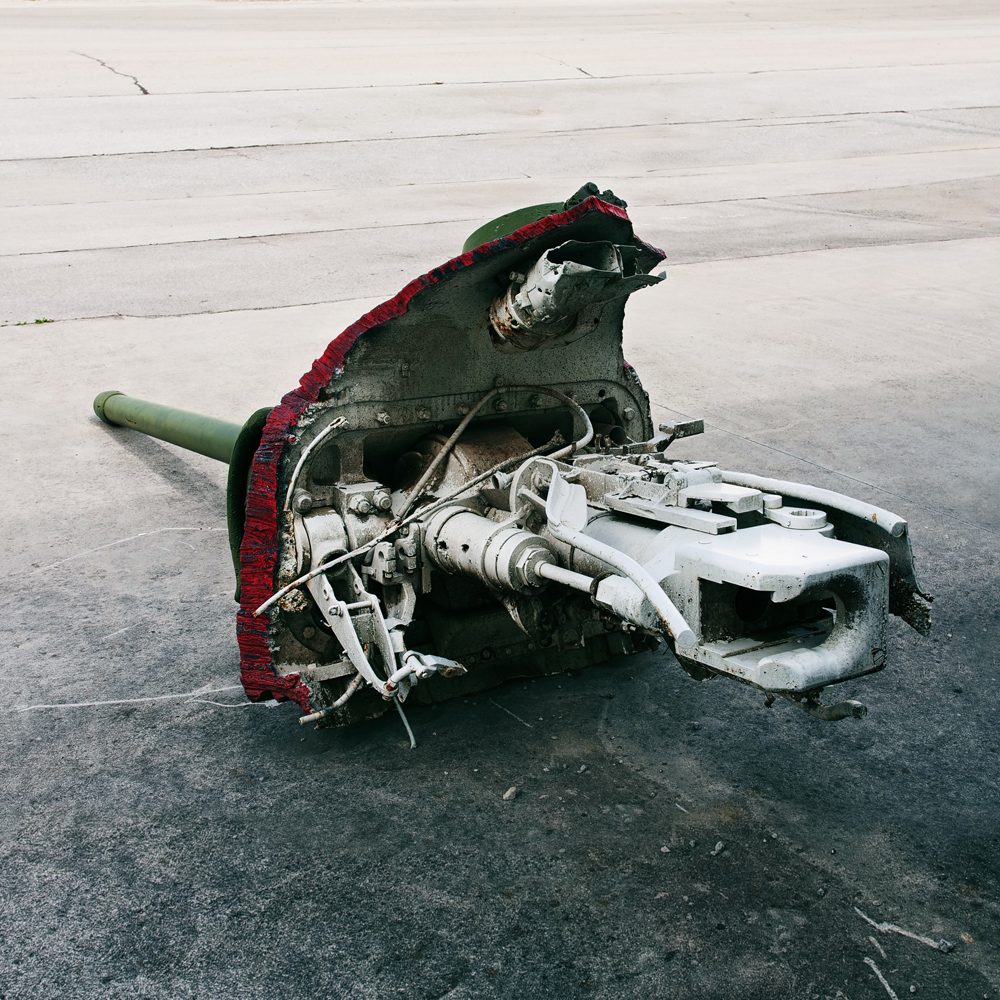Type: Heavy Tank
Nation: United Kingdom
Period: World War 1
Location: Cambrai Tank 1917 Museum, Flesquières, France

Counting rivets
The Mark IV was arguably the most important British tank of World War 1. From the summer of 1917 until the Armistice on 11 November 1918, Mark IVs were involved in virtually every major battle on the Western Front – and a few of them were also deployed in the Middle East. An easy way to tell a Mark IV from a Mark II or Mark III is to look at the band of rivets above the frontal vision ports: While all of the Mark IV’s rivets are evenly spaced, the Mark II‘s and Mark III‘s outer rivets are distinctively placed closer together – because these training tanks had been built with the same old jigs as the Mark I with its wider cab. Furthermore, the small direct vision slits on the Mark IV are placed directly under the rivet band, while on previous models they are located right above the visor flaps.

To the teeth
The Mark IV was the first British tank to have smooth idler wheels on the front. As tracks had to be allowed to stretch over time, this was an important step forward from previous toothed idler sprockets. The Mark IV could be equipped with track spuds. These extension plates had first been issued to Mark IIs at the Battle of Arras and they were usually carried in the open-top stowage box at the rear of the roof. If needed, they could be clamped to the track links for extra grip and for spreading out the tank’s weight to prevent it from sinking into soft ground – an idea which would famously be rekindled for the American M4 Sherman‘s “duckbill” end connectors during World War 2.

Superior females
The female Mark IV was armed with five air-cooled Lewis machine guns. The female sponsons were smaller than the male versions and had an escape door underneath. Female tanks were actually considered more effective than males because since the early tanks were mostly shooting at infantry, machine guns were better suited to hitting the enemy while being on the move. The gunners on male Mark IVs more often fired their six-pounders for effect.

Resurrection
This particular vehicle served with 12 Company in France. On 20 November 1917, the first day of the Battle of Cambrai, two British tank battalions were leading the British advance towards Flesquières. As they approached the town on the ridge, they ran into stiff opposition. Most of their tanks were soon destroyed, disabled or forced to withdraw. Having lost contact with the accompanying infantry, the crew of D51 “Deborah” (production number 2620) eventually found themselves on their own in the German-occupied village. Out of the sudden, five field gun shells struck the tank dead on. The vehicle itself suffered only moderate damage, but four crew members lost their lives. Deborah‘s commander Frank Gustave Heap and the other three men managed to escape and eventually got back to safety. The area around Flesquières remained contested until its final liberation in September 1918. It was around that time the wrecked tank received the massive damage to its front. By the end of the war it was common practice to blow up wrecks that were beyond repair and then remove the debris. However in Deborah’s case this would not have been possible without causing extensive damage to the surrounding buildings. Instead, it was decided to bury the tank in a nearby pit, where it remained until the end of the century when it was rediscovered by Cambrai residents Philippe Gorczynski and Lean-Luc Gibot. On 20 November 1998, exactly 81 years after it had been knocked out, Deborah was completely excavated. It was put on display in a barn and later moved to the purpose-built Cambrai Tank 1917 Museum.


3 responses to “Mark IV (Female)”
[…] beam that was carried on two distinctive roof rails running along the whole length of the Mark IV. If a tank got „ditched“, two crew members would have to volunteer to get out and chain the […]
LikeLike
[…] improved the tank‘s mobility, crew conditions had somewhat become even worse compared with the Mark IV. As the new engine drew air from outside the vehicle instead of the crew compartment, there was […]
LikeLike
[…] place only a month later. On 24 April three German A7Vs encountered a British Mark IV Male and two Mark IV Females near the town of Villers-Bretonneux. The female tanks – armed with machine guns only – had to […]
LikeLike